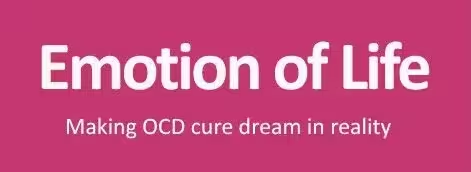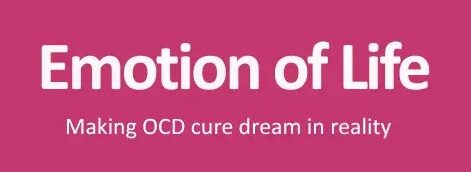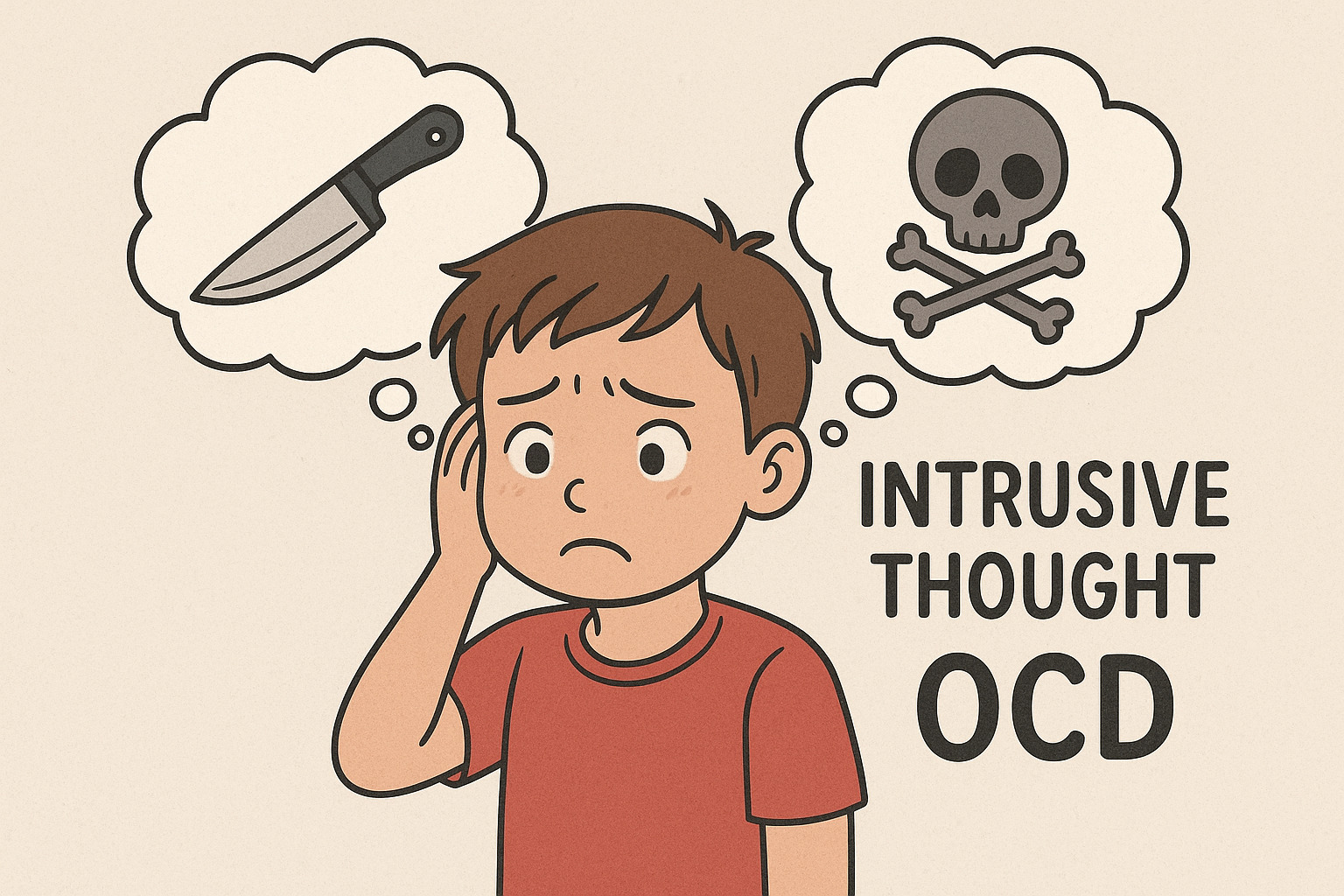Intrusive Thought OCD in Children is one of the most unsettling challenges a young mind can face. Unlike everyday worries, these are sudden and unwanted thoughts that intrude without warning and feel impossible to control. A child may think, “What if I push my best friend?” or “What if I shout something rude in class?” even though deep down, they will never act on these thoughts. For the child, these experiences feel scary, shameful, and confusing, making them fear their own mind.
What makes Intrusive Thought OCD in Children especially distressing is the way kids misinterpret these thoughts. Many start believing the thoughts reflect who they are, labelling themselves as “bad” or “dangerous,” when in reality, these thoughts are just anxiety signals not truths.
Because of this, children often hide their fears, or they may seek constant reassurance from parents and teachers. Parents might notice their child avoiding situations, asking repeated questions like “Did I do something wrong?” or feeling upset for reasons they cannot explain.
The impact can spread into many areas of life. School performance may incline due to poor concentration, friendships can fade if the child avoids playing with peers, and family life may feel stressed with endless reassurance-seeking. Even bedtime can become difficult, with children lying awake replaying thoughts and feeling guilty.
At Emotion of Life, with the expertise of OCD Specialist Therapist Shyam Gupta and Pratibha Gupta, both children and families are guided step by step. With structured therapies, family support, and a clear plan, recovery becomes possible. Their focused approach “100 Days, 100 Sessions, 100% OCD Recovery” offers families hope and a focus to lasting change.
Symptoms of Intrusive Thought OCD in Children
Physical Symptoms
- Sweating or trembling when the thoughts occur.
- Racing heartbeat or sudden feelings of panic.
- Trouble falling asleep or staying asleep.
- Stomach pain, headaches, or tension linked with anxiety.
- Restlessness and inability to sit calmly.
Psychological Symptoms
- Repeated, unwanted thoughts that feel distressing.
- Intense guilt, shame, or fear about the thoughts.
- Constant mental replaying of situations to “check” if harm was caused.
- Frequent confessions or reassurance-seeking.
- Avoiding certain activities or people connected to the intrusive thoughts.
Types of Intrusive Thought OCD in Children
Intrusive Thought OCD in Children often takes on different themes:
- Harm-related Thoughts – Fear of hurting themselves or others.
- Moral or Religious Thoughts – Fear of being sinful, immoral, or “bad.”
- Contamination Thoughts – Fear of spreading germs or dirt unintentionally.
- Relationship Thoughts – Worry about upsetting family or friends.
- Safety Thoughts – Fear of causing accidents or disasters by mistake.
Causes of Intrusive Thought OCD in Children
Psychological Factors
- Sensitive personalities that strongly value right and wrong.
- Perfectionist thinking, where children feel they must never make mistakes.
- Difficulty separating thoughts from actual behaviour.
Social Factors
- Strict or overly critical parenting styles.
- Peer pressure, high expectations at school, or comparison with others.
- Experiences of bullying, rejection, or social isolation.
Environmental Factors
- Stressful events like moving houses or changing schools.
- Family tension or ongoing conflicts at home.
- Watching others cope with anxiety or constant worry.
Treatment and Management of Intrusive Thought OCD in Children
At Emotion of Life, the approach to treating Intrusive Thought OCD in Children is supportive, structured, and focused on building long-term resilience. Under the guidance of Shyam Gupta and Pratibha Gupta, children learn skills to manage their thoughts instead of fearing them.
Cognitive Behaviour Therapy (CBT)
Teaches children that thoughts do not define reality.
Exposure and Response Prevention (ERP)
Gradually helps them face fears while resisting compulsive checking or confessing.
Acceptance and Commitment Therapy (ACT)
Builds acceptance of uncertainty while focusing on values and meaningful living.
Wellness Counselling
Balances study, rest, and recreation for emotional health.
Personality Dynamics Training
Helps children discover strengths and reshape unhelpful patterns.
Healthy Coping Practices
Creative activities, relaxation, and journaling to lower stress.
Family Guidance
Parents are coached on how to support children without feeding compulsions.
This structured plan, following the principle “100 Days, 100 Sessions, 100% OCD Recovery,” empowers both the child and the family toward lasting recovery.
Recovery Stories of Intrusive Thought OCD in Children
Kabir’s Story
Kabir, age 10, constantly feared that he might harm his pet dog. He avoided touching the dog and repeatedly asked his parents if the pet was safe. Through CBT and ERP sessions at Emotion of Life, Kabir slowly built confidence in handling his thoughts. Over time, he stopped seeking reassurance, began playing with his dog again, and regained his cheerful personality.
Sana’s Journey
Sana, 11, worried that she might shout something offensive in class. Even though her teachers reassured her, she cried after school and avoided participating. With guidance from Pratibha Maam, she practiced ACT and wellness strategies, which helped her trust herself again. Sana is now active in class, enjoys her friendships, and no longer feels controlled by her intrusive thoughts.
Client Reviews for Intrusive Thought OCD in Children
Radhika, Mumbai (mother of a 9-year-old):
“My son lived with constant fear of hurting others. After therapy at Emotion of Life, he sleeps peacefully, plays with his friends, and no longer feels trapped by his thoughts.”
Anil, Delhi (father of an 11-year-old):
“Our daughter believed she did something wrong every day at school. With therapy from Shyam Gupta and Pratibha Gupta, she has grown more confident and enjoys school again.”
Shweta, Bangalore (mother of a 12-year-old):
“As parents, we felt helpless. Therapy not only gave our daughter freedom from intrusive thoughts but also taught us how to support her better. She is happier, calmer, and more confident today.”
Conclusion on Intrusive Thought OCD in Children
Intrusive Thought OCD in Children can overwhelm both the child and the family. These sudden thoughts cause confusion, guilt, and distress, making school, friendships, and daily life much harder. Children may feel stuck, while parents struggle to provide answers.
Yet, recovery is entirely possible. With structured therapies like CBT, ERP, and ACT, combined with family support, children can learn to live freely without fear of their thoughts. At Emotion of Life, Shyam Gupta and Pratibha Gupta help children rebuild confidence, trust themselves again, and return to a life filled with joy, balance, and peace.
FAQs
Q1: What is Intrusive Thought OCD in Children?
It is when a child experiences unwanted, distressing thoughts that trigger guilt or fear, even if they don’t match the child’s true self.
Q2: What are common signs of Intrusive Thought OCD in Children?
Reassurance-seeking, repeated confessions, avoiding activities, restlessness, and constant self-doubt.
Q3: Can children fully recover from Intrusive Thought OCD?
Yes. With consistent therapies like CBT, ERP, and ACT, children can make a complete recovery.
Q4: How can parents help a child with Intrusive Thought OCD?
By staying calm, avoiding constant reassurance, and following professional guidance during therapy.
Q5: Why do intrusive thoughts feel so real to children?
Because anxiety exaggerates ordinary thoughts, making them feel urgent and dangerous, even when they are not true.


